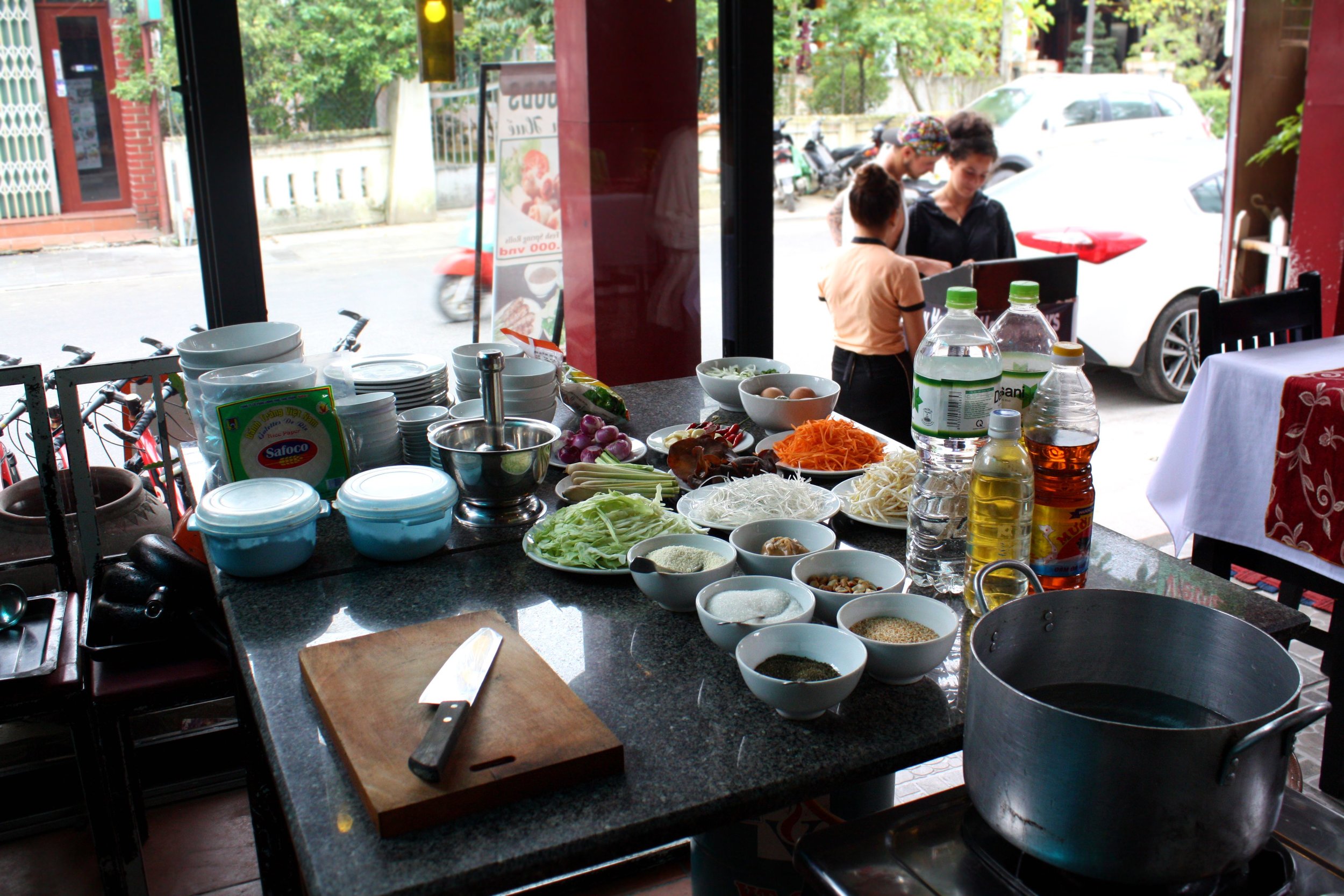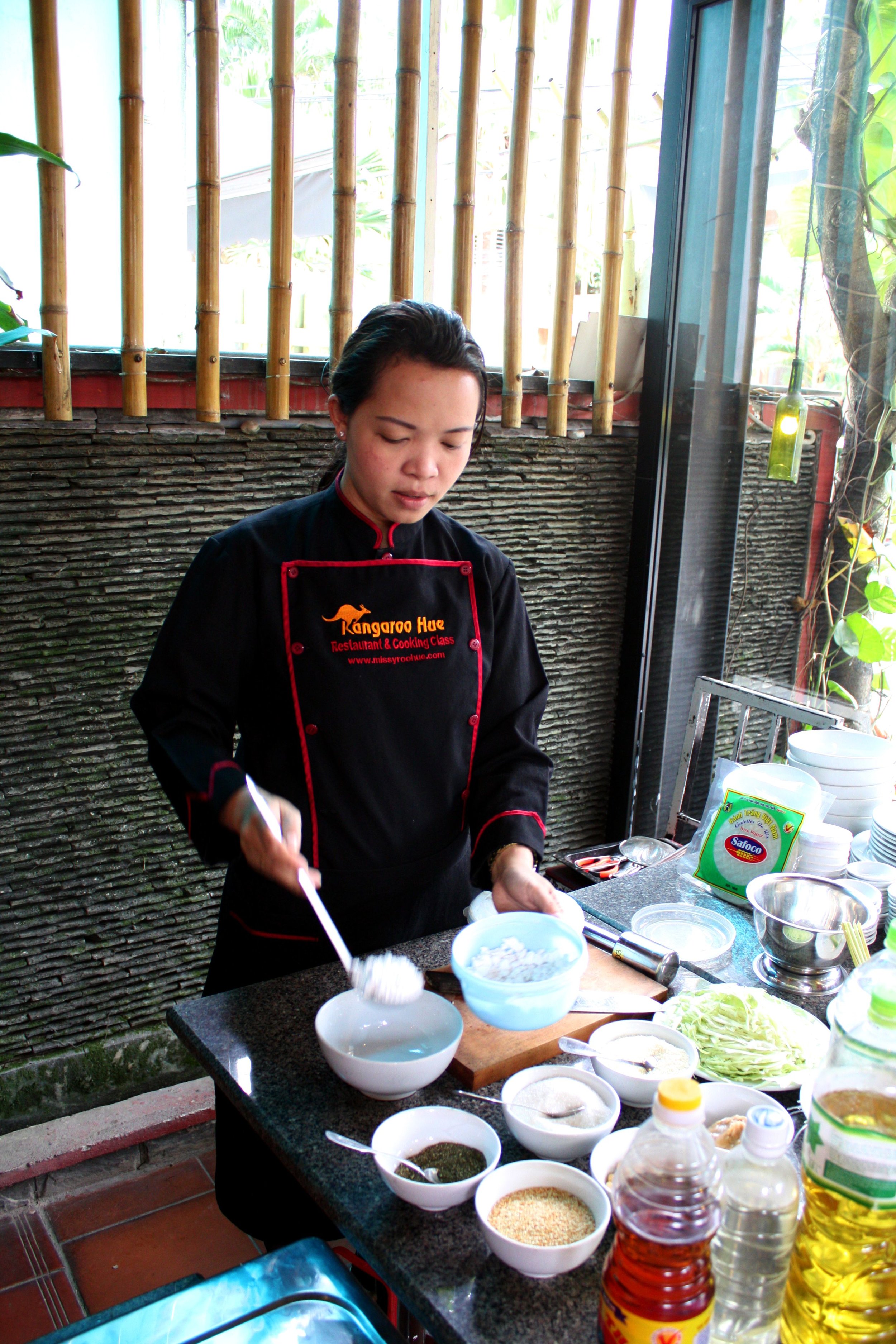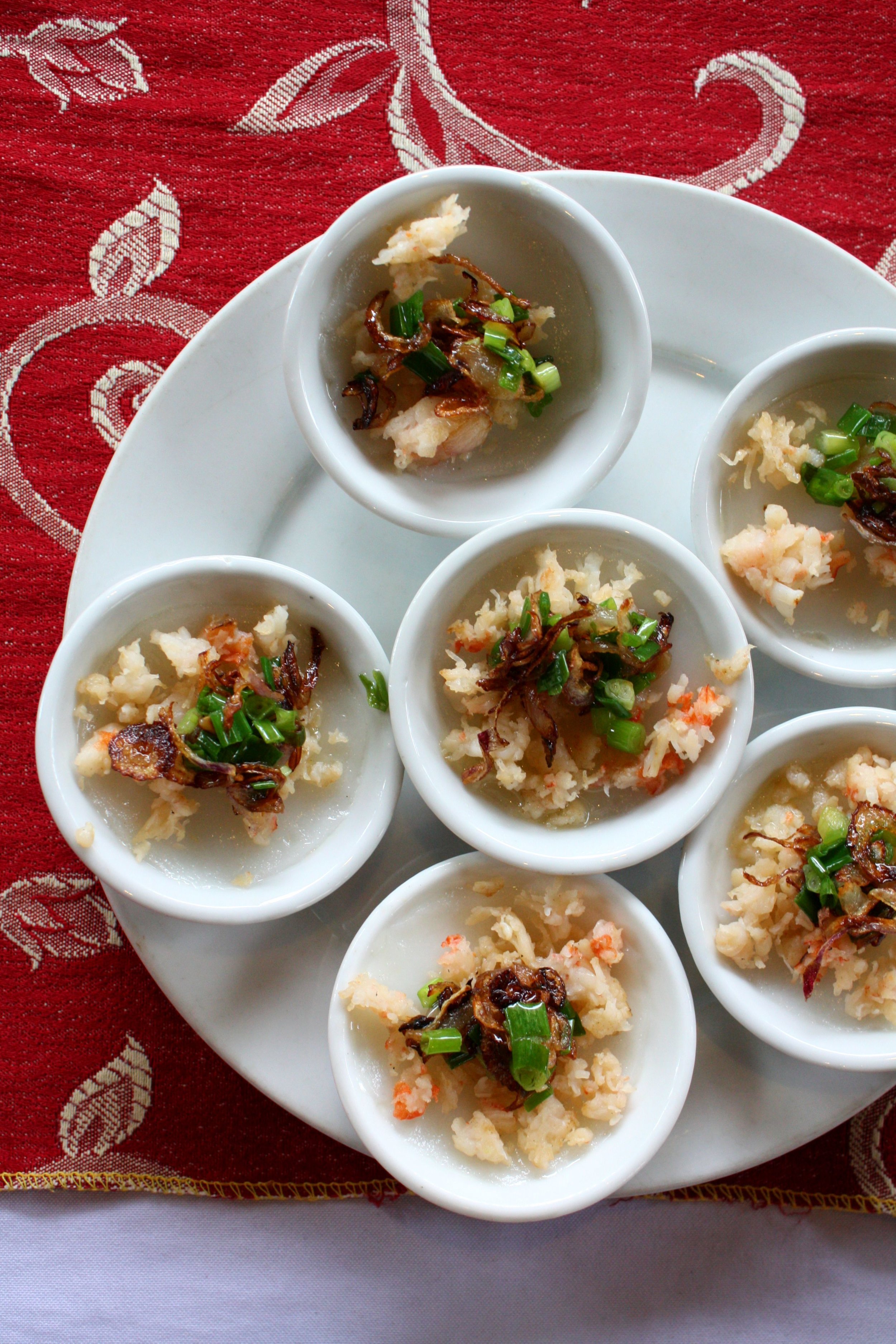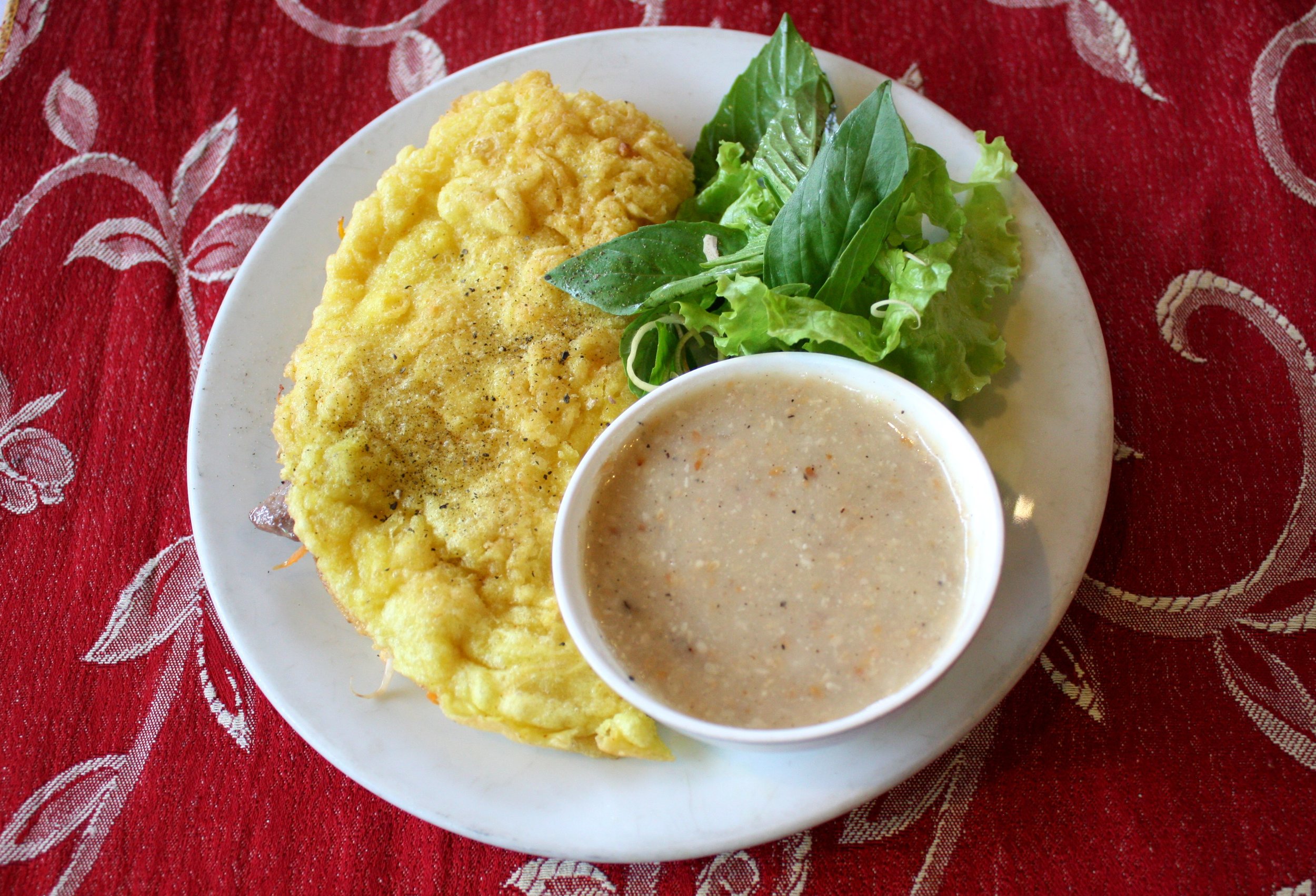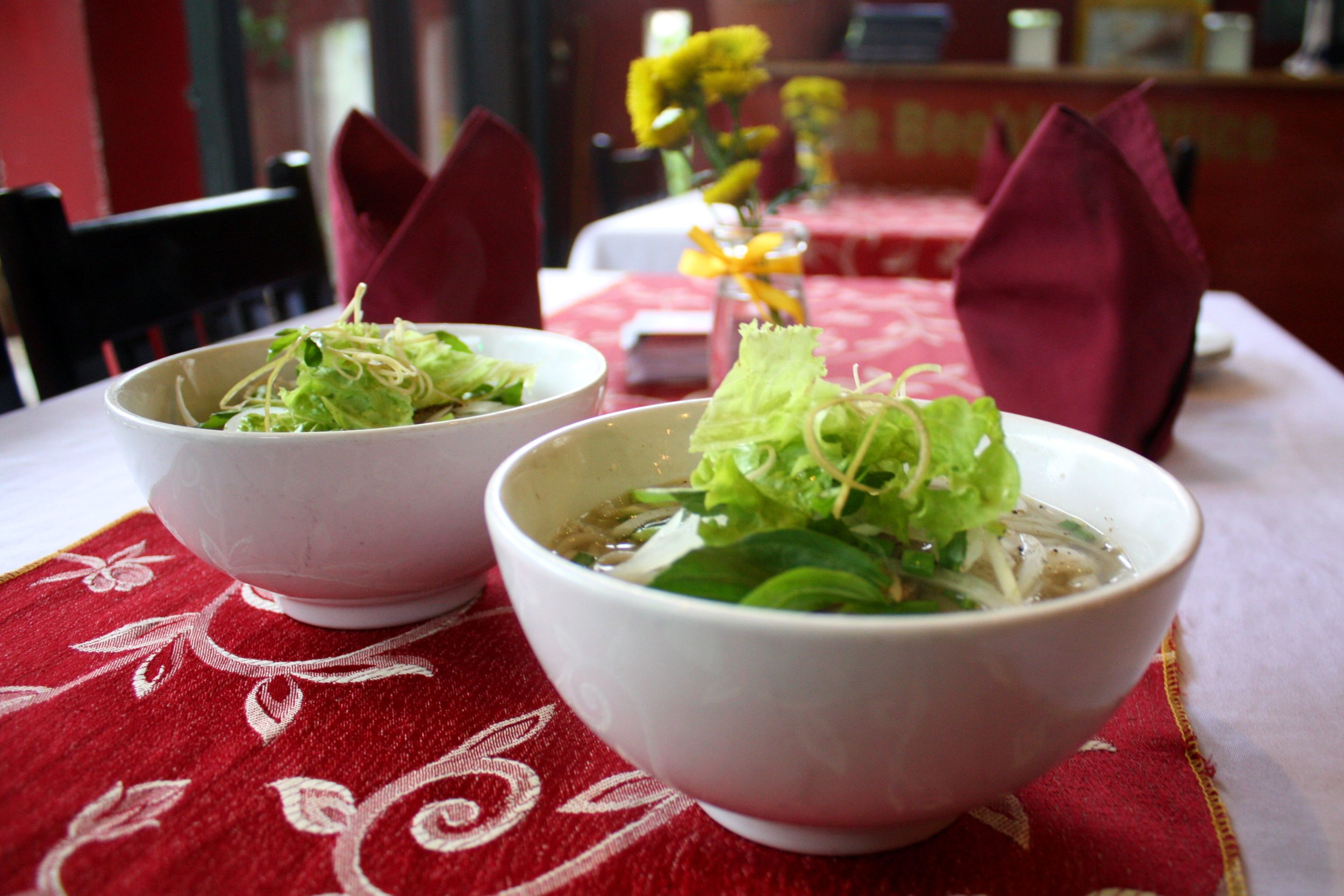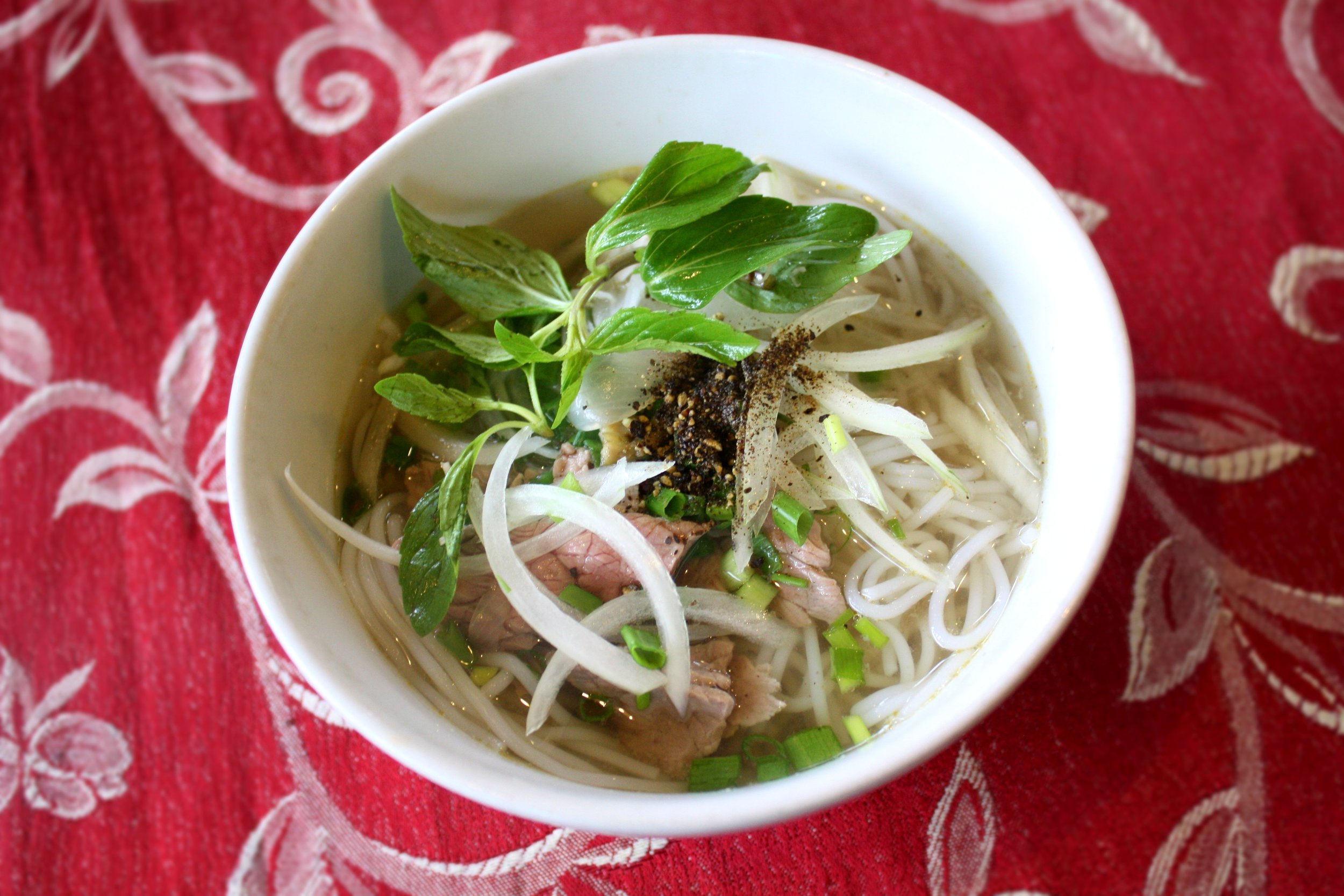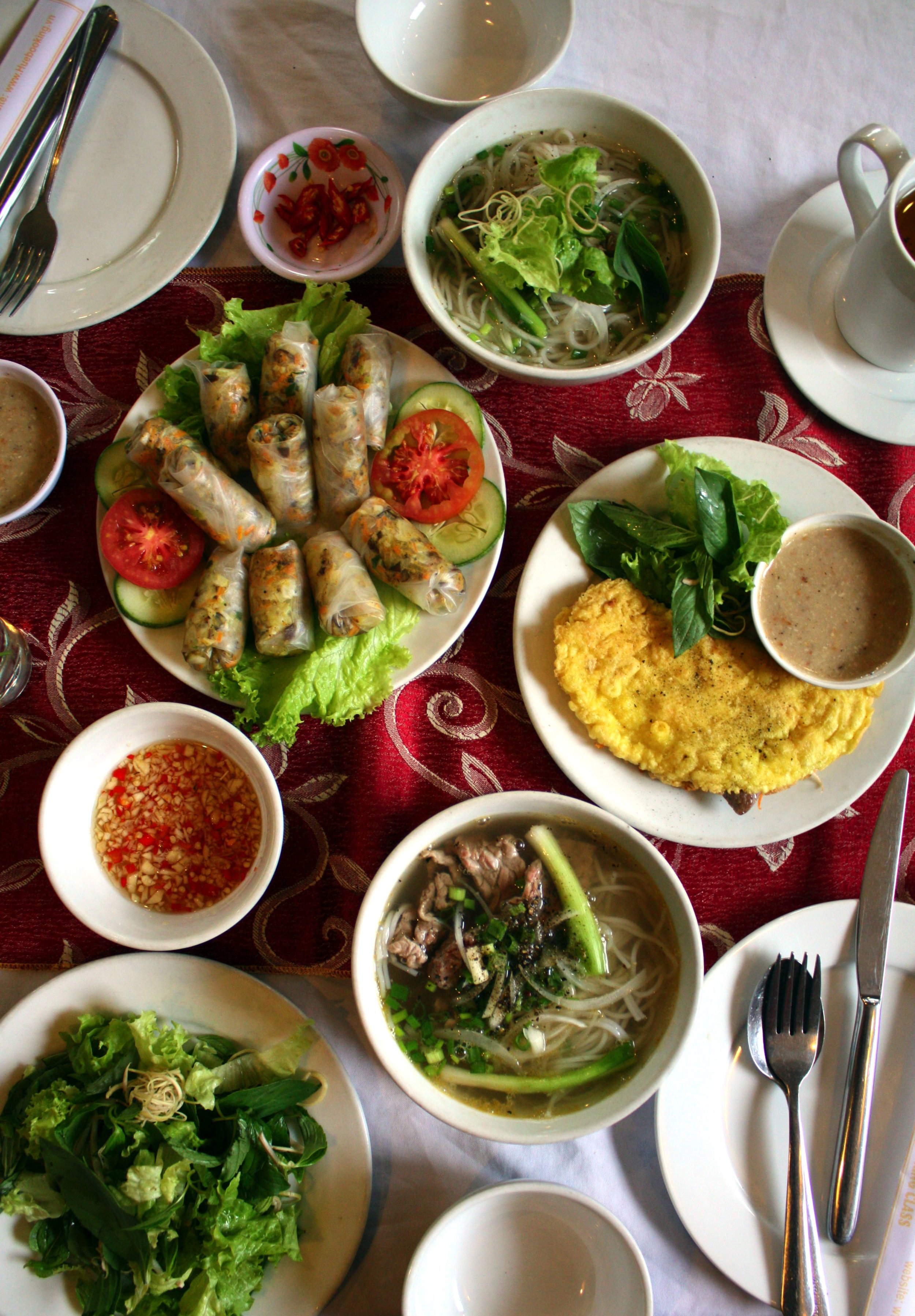More information
Location: Hue, Vietnam
Summary:
Kangaroo class is exactly the type of class that we typically try to avoid: it caters to larger groups, it has a set menu of tourist favourites and it came recommended by our hotel. However, we found ourselves liking the class much more than we expected and we think you might too! The focus is on very Hue-centric food, which you aren’t likely to learn about in other parts of Vietnam and the instruction is very clear. Give it a go if you’re passing through Hue! If you’re as lucky as we were, you might even get the class to yourself.
Who should attend:
Anyone who finds themselves in Hue with nothing to do! This course is definitely more of an activity than a class - you likely won’t find yourself making these dishes at home but they’re nonetheless fun to put together while you’re in Hue!
Dishes:
Bun Bo Hue
Hue style beef noodle soup
Banh Beo
A steamed “pancake” made from rice flour and topped with shrimp, fried shallots and herbs
Banh Khoai
A fried rice and tapioca pancake coloured yellow with turmeric and filled with bean sprouts, vegetables, a quail egg and pork
Nem Cuon Tuoi
Fresh spring roll filled with cooked vegetables, vermicelli and wood ear mushrooms
Full Review:
The Kangaroo Cooking Class is a fun, modestly priced, tourist oriented class perfect for killing time before you leave Hue. The spring rolls and both types of “pancake” (Banh Beo and Banh Khoai) were all very tasty, but unfortunately the Bun Bo Hue suffered from the time constraints of the class and was therefore made with nebulous chicken powder combined with beef bones rather than getting its flavour with just bones, time and aromatics.
The instruction was good all around, with brief demonstrations before you get to take over the cooking station and try your hand at frying Banh Khoai, plating Banh Xeo and rolling Nem Cuon Tuoi. The Nem was a surprising highlight as it used a type of rice paper that we don’t often see at home - while ours requires you to wet the paper before you can use it, this paper was flexible even in its dry form.
Don’t go out of your way for this one, but take it for what it is if you find yourself in Hue! We were pleasantly surprised and found ourselves really enjoying the class.
What we learned:
Banh Beo is surprisingly easy! They’re traditionally eaten cold, but we found them much tastier fresh out of the steamer.
Although Banh Khoai is supposed to be made from just tapioca and rice flour, there is a Banh Khoai flour mix sold in stores that contains a bit of wheat flour as well. If you’re allergic to gluten, make sure you check the flours they use!

